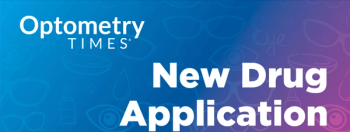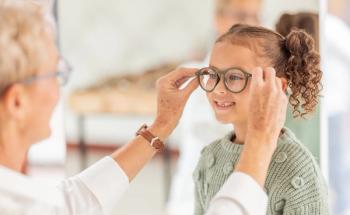
New York Giants Victor Cruz talks vision with student athletes
New York Giants wide receiver Victor Cruz spoke to student athletes about the importance of vision during a sports vision session at sports training facility IMG Academy.
(Image courtesy of Alcon)
BRADENTON, FL-New York Giants wide receiver Victor Cruz spoke to student athletes about the importance of vision during a sports vision session at sports training facility IMG Academy.
Facilitated by IMG Academy and Alcon, Donald S. Tieg, OD, FAAO, and his “A” Team of sports vision specialists evaluated the visual-motor skills of Cruz and elite student athletes. Athletes, including Cruz, participated in a set of tests to assess visual performance in athletic use. Tests evaluated eye-hand-foot dominance and coordination, visual tracking, response time, agility, and more.
Speaking exclusively with Optometry Times, Cruz discusses how contact lenses have made a difference in his on-field performance.
“I would see the ball late and would make diving plays and really make an effort because I would see the ball late,” he says. “When I started to wear contact lenses, it became a lot easier for me. I would see the ball, I was making a lot more plays because my vision was better. I could see the ball from farther away as opposed to when it came right up on me.”
Although he’s worn contact lenses since high school, Cruz was recently refit with Dailies Total 1 lenses while working with Alcon. He says his vision with the new lenses is “amazing.”
He says, “Not just the vision, but the comfort level is the biggest difference. Not having to use eyedrops at the end of the day because they were getting dry. Not having to take them out because they were irritating me. My vision is sharper especially in different climates and different weather conditions. It’s only going to help me focus more and have a clearer outlook on the game because of how sharp and how comfortable these contact lenses are.”
Carl H. Spear, OD, FAAO, a member of Dr. Tieg’s “A” Team,” described how the tests provide information to guide athletes to a better performance through improved vision. Some tests are familiar to most ODs, such as visual acuity and wavefront analysis, while others may be new to non-sports vision practitioners.
Visual acuity
As part of a baseline ocular health exam, visual acuity (VA), especially best-corrected visual acuity (BCVA), is a key piece of data in sports vision.
Wavefront analyzer
Wavefront picks up any aberrations and shows opportunities for differences in Rx throughout the day based on lighting. For example, a baseball player may have one correction for day games and one for night games. On a bright sunny day, without wearing sunglasses, a player might show a shift in refractive error based on pupil size and corneal aberrations.
Eye/hand/foot dominance
In sports vision, it’s important to know which eye is dominant. A classic example of why this is important is a baseball player who is cross dominant: right-eye dominant but left handed. His right eye will be looking at the pitcher when he is at bat. Knowing dominance is also important for shooters. Athletes need to know their ocular dominance as they go through training to understand how to compensate for or capitalize on their dominant eye.
Sensory system
Sensory systems provide training and evaluation programs such as dynamic acuity, focus, eye movements, rapid recognition, and a variety of other programs that work to train focus and concentration. You can also train eye movements, saccades, and fixation.
Practitioners interested in sports vision should invest in such a system because it replaces older technologies for eye-hand coordination.
Strobe glasses
Strobe glasses worn while using a balance board increase the degree of difficulty. Sometimes an athlete is very good at eye-hand coordination drills, and continuing at the same level is not beneficial. Adding a distractor, such as strobe glasses, makes the task harder and offers deeper training.
Eye tracking
Eye or visual tracking has been developed for use in the retail industry. Subjects wear a visual tracker while in a store to allow researchers to see where the shopper is looking.
Visual tracking for athletes shows if the athlete is watching the ball you throw, for example, or watching something else. Information gained from visual tracking helps train with saccades, fixation, and tracking.
Fit light track
The light track is a training system for reaction time, eye-hand coordination and total body coordination. Lights can be configured to your testing needs and customized for any sport. Depending on how big the lights are and the distance among them, athletes work on body motion and movement.
Quick board
The quick board measures and trains foot speed, eye-foot reaction time, and eye-foot coordination. It’s essentially a version of the video game Dance Dance Revolution. The athlete looks straight ahead at the lights and must step on the corresponding spot on the pad.
Neuro tracker
This test assesses athletes’ perceptual and cognitive abilities and offers a way to improve these functions, thereby increasing athletic performance.
Vergel
This device evaluates nearpoint convergence, accommodation, recovery, and fixation disparity. We are learning that there may be some correlation with concussions, which is important to understand when treating athletes.
Newsletter
Want more insights like this? Subscribe to Optometry Times and get clinical pearls and practice tips delivered straight to your inbox.



















































.png)


